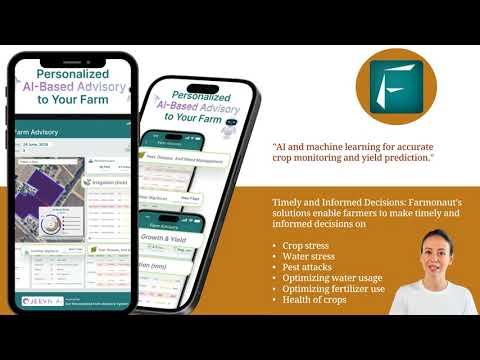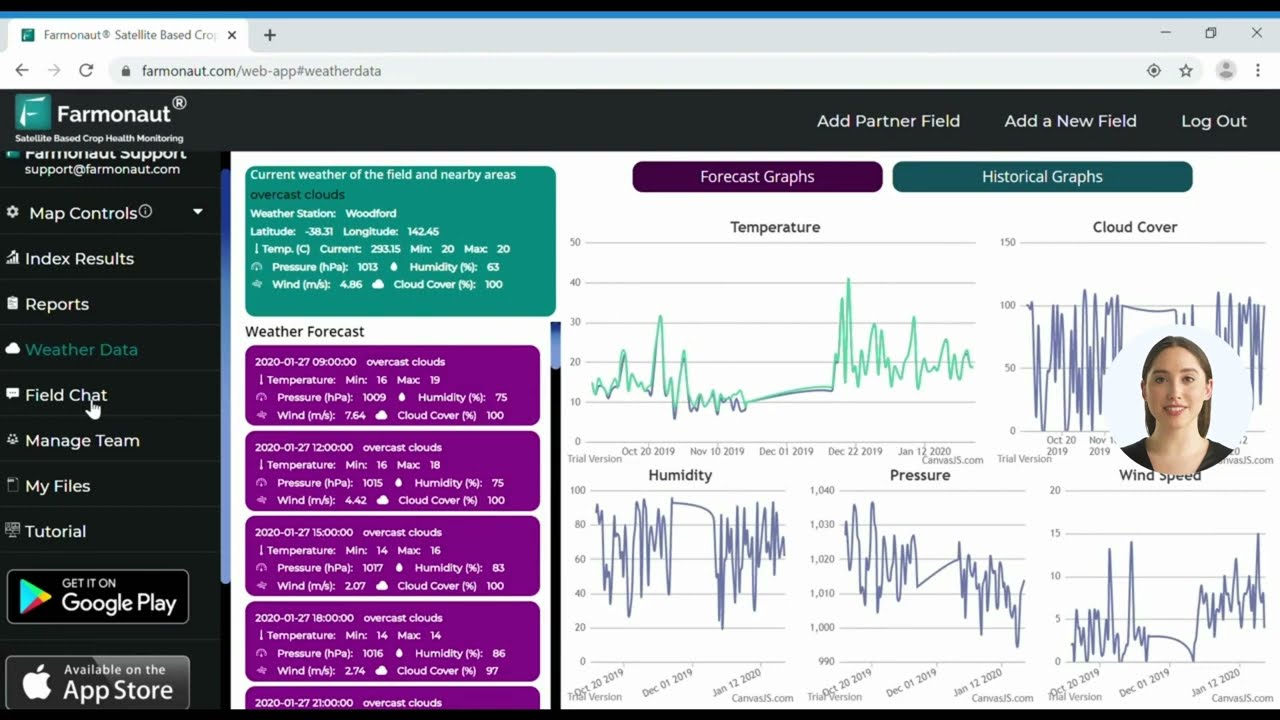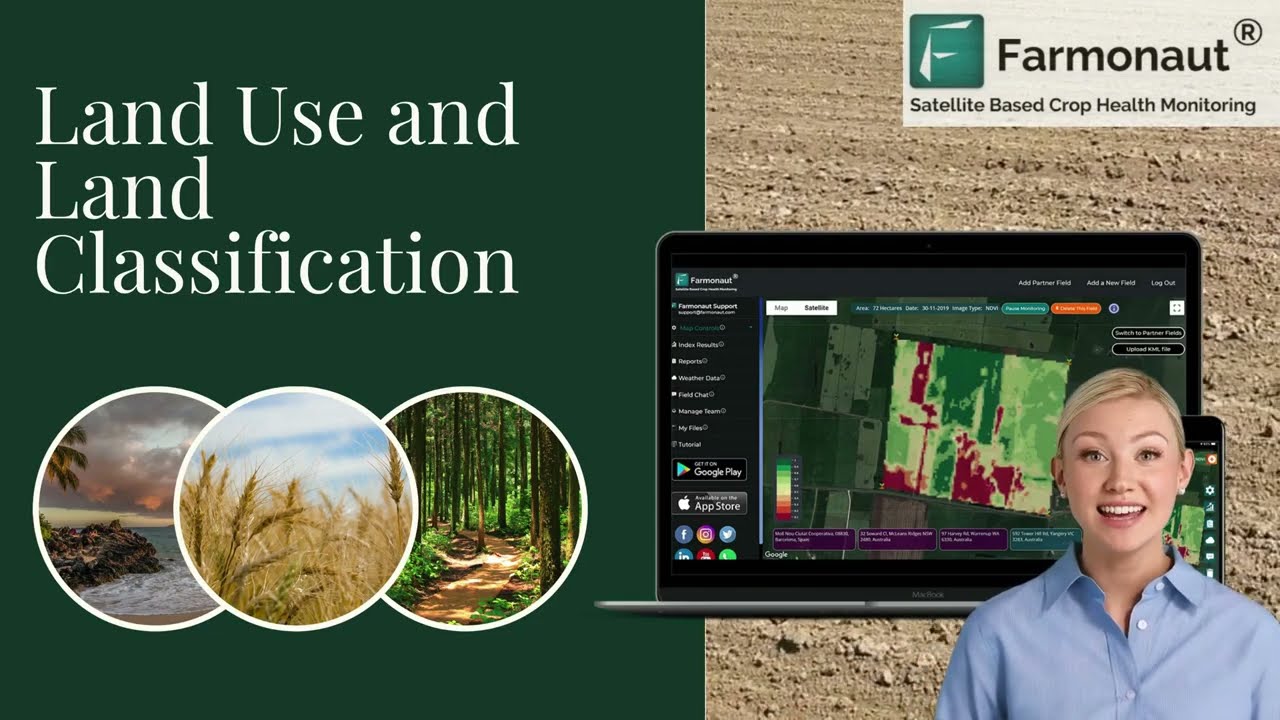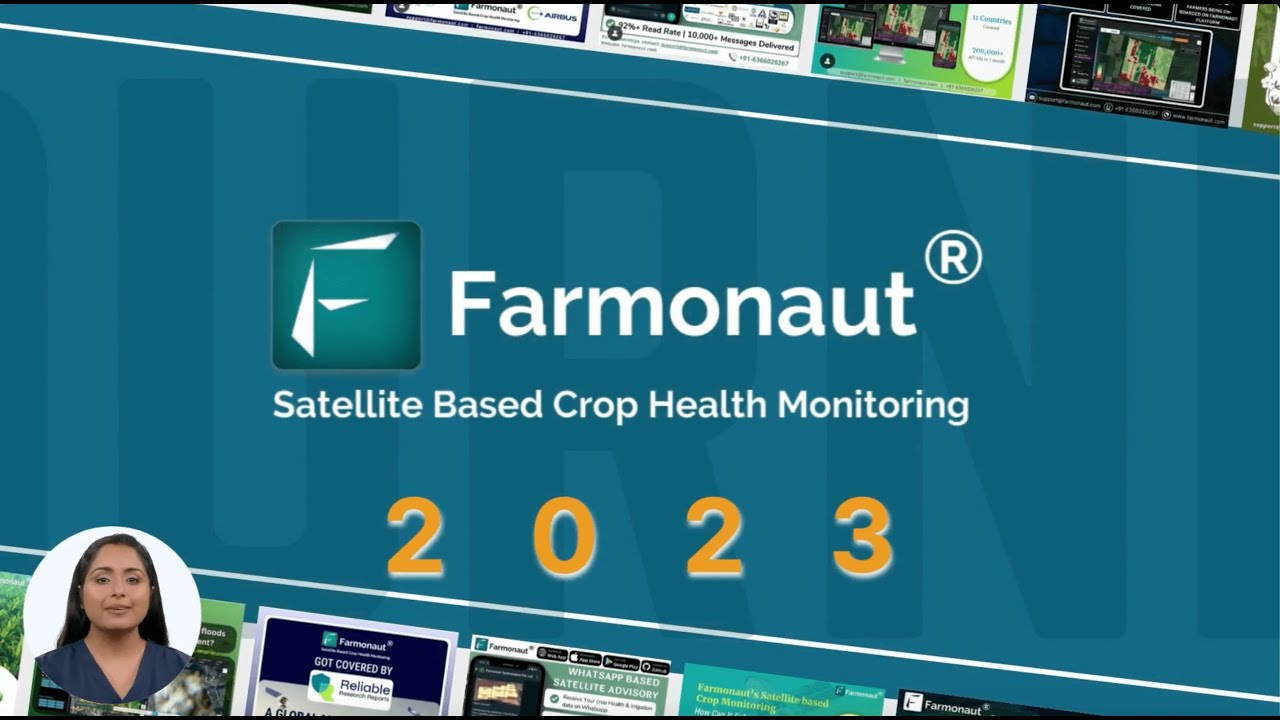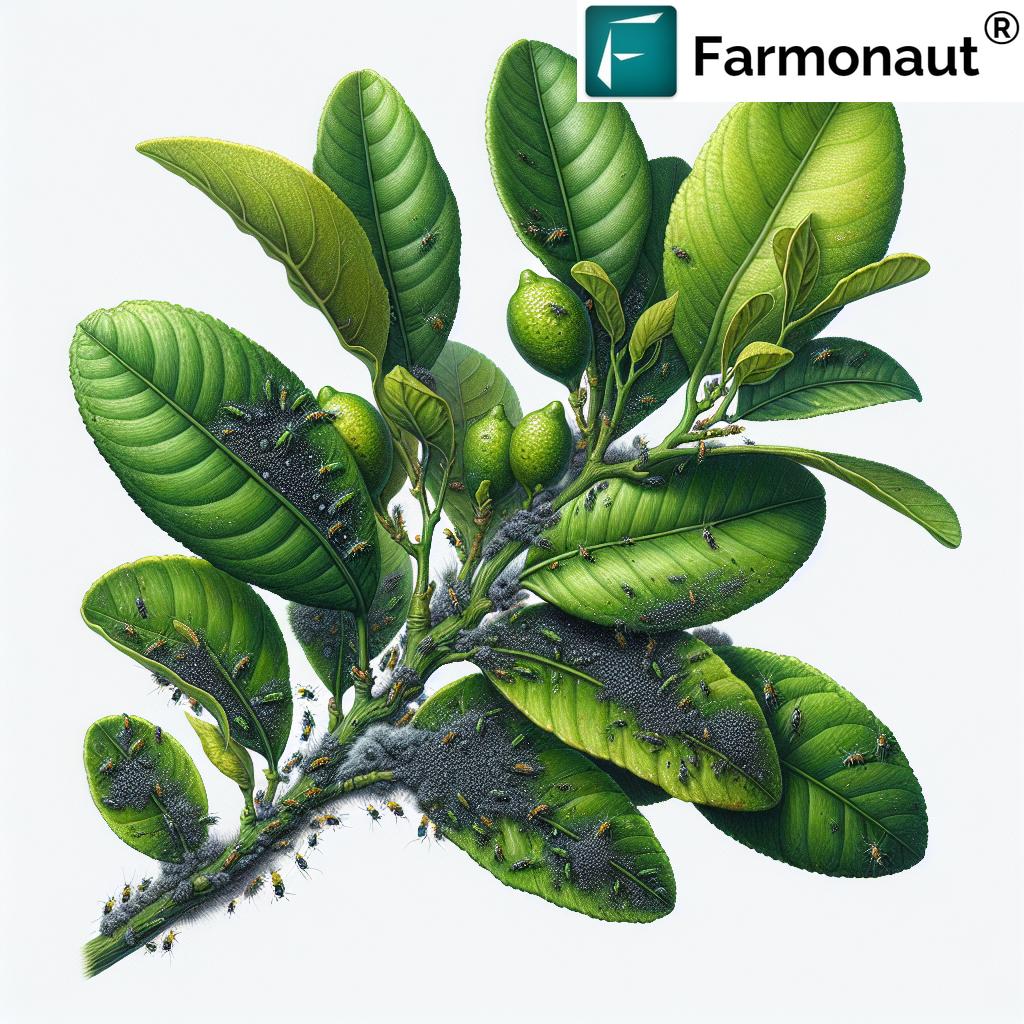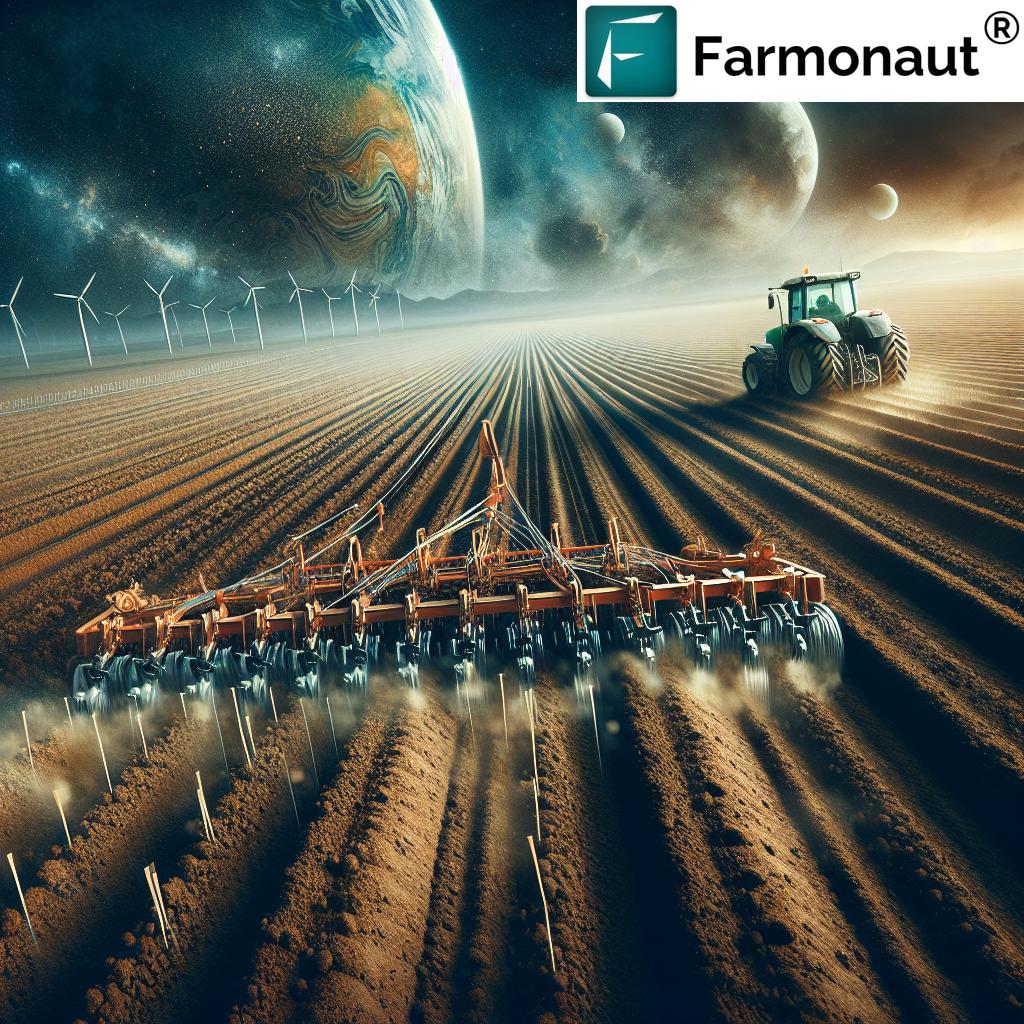Agriculture Farm Management Software: 7 Secret Tools!
“Over 70% of modern farms use software for crop planning and data analysis, revolutionizing agricultural efficiency.”
Table of Contents
- Introduction to Agriculture Farm Management Software
- What is Farm Management Software?
- Why Farm Management Software Matters in Modern Agriculture
- The 7 Secret Tools of Agriculture Farm Management Software
- Feature Comparison Table: 7 Secret Tools
- Farmonaut Spotlight: Redefining Farm Management
- Major Benefits of Implementing Farm Management Software
- Emerging Trends in Agricultural Data Management
- Challenges & Considerations in Adoption
- Frequently Asked Questions
- Conclusion: The Future of Efficient and Sustainable Agriculture
- Farmonaut Subscription Plans
Introduction to Agriculture Farm Management Software
In today’s rapidly evolving agricultural landscape, the pressure to produce more food sustainably, optimize resource use, and increase profitability is greater than ever. Farmers, agribusinesses, and government agencies worldwide are turning to farm management software (FMS) to face these challenges head-on. With features such as crop planning tools, agricultural data management, real-time monitoring, and analytics-driven decision support, these digital solutions are transforming traditional practices and empowering us to achieve unprecedented levels of efficiency and productivity.
In this comprehensive guide, we’ll explore the core features, benefits, and latest trends in farm management software, highlighting “7 Secret Tools” that are revolutionizing modern agriculture. We’ll also spotlight Farmonaut, an industry leader in satellite-based farm management, and compare the key platforms shaping the future of precision agriculture.
What is Farm Management Software?
Farm management software (FMS) is a suite of digital tools designed to assist farmers and agribusinesses in managing, monitoring, and optimizing all aspects of farm operations. These platforms integrate real-time data from various sources—such as IoT devices, drones, satellites, and manual entries—enabling informed decisions across crop planning, livestock management, supply chain, and financial operations.
From smallholder farmers to large enterprises, FMS solutions facilitate tasks like resource allocation, tracking farm activities, monitoring crop health, and ensuring regulatory compliance. By digitizing records and automating workflows, these systems help us maximize yields, reduce operational costs, and support sustainable agriculture practices.
“Farm management software can increase operational productivity by up to 25% through advanced data-driven decision-making tools.”
Why Farm Management Software Matters in Modern Agriculture
Digital transformation is sweeping across the agricultural industry. Traditional paper-based systems and manual record-keeping can’t keep pace with the complexities of modern farm operations. With agriculture facing uncertain climates, fluctuating markets, and rising resource costs, the need for actionable data, precise monitoring, and cost optimization has never been greater.
- Optimizing resource use: Smart management of inputs like water, fertilizers, and pesticides through integrated precision tools lead to substantial long-term savings.
- Boosting productivity: Automation and timely alerts enable us to proactively address risks, such as pest outbreaks or adverse weather conditions, maximizing both yields and quality.
- Supporting sustainability: Digital records help maintain regulatory compliance, track carbon footprint, and promote environmentally-friendly farming practices.
- Accessing new markets: Traceability and supply chain management tools open doors to international markets by meeting global standards and ensuring transparency.
Agriculture Farm Management Software: 7 Secret Tools!
The real power of farm management software lies in the integration of multiple tools that work harmoniously to streamline farm operations. Here are the “7 Secret Tools” that every forward-thinking farmer should consider leveraging:
- Crop Planning and Management
- Livestock Management
- Financial Management
- Inventory & Equipment Management
- Labor Management
- Compliance & Record-Keeping
- Weather Integration & Risk Alerts

1. Crop Planning and Management
The cornerstone of any thriving farm is a data-driven crop planning tool. Platforms like AgriWebb offer robust solutions for mapping crop rotations, growth stages, yield predictions, and even maintaining historical field records. These systems integrate satellite data, weather insights, and soil analytics to guide every step of crop management:
- Seasonal planning for crop rotations to maintain soil health and productivity
- Monitoring growth stages using real-time imagery and IoT sensors
- Predicting yields based on environmental data and historical trends
- Record-keeping for all treatments, including pesticide, fertilizer, and irrigation events
The integration of such tools provides actionable insights that help us proactively manage resources, ultimately reducing costs and increasing profitability.
2. Livestock Management
Today’s farm management software is not limited to cropping alone. Comprehensive livestock management solutions help us track animal health, breeding schedules, and performance metrics. For example, AgriWebb specializes in keeping detailed records of each animal, automating vaccination reminders, and identifying underperforming herds:
- Tracking breeding cycles and offspring lineage
- Monitoring animal health with integrated sensors and vet records
- Automation of feeding and milking schedules
- Performance analytics to optimize herd productivity and welfare
Efficient livestock management means better resource allocation, fewer losses, and improved marketability of animal products.
3. Financial Management
Integrated farm financial tracking software brings every aspect of accounting and budgeting under one roof. Tools such as Granular enable us to monitor expenses, revenues, and profitability with precision and clarity:
- Automated budgeting and expense tracking
- Profitability analysis by field, crop, or operation
- Real-time financial reporting and data analytics for transparent decision-making
- Forecasting tools that help with investment and risk management
Accurate, timely financial data means we can confidently plan for expansion, weather downturns, or justify resource investments.
4. Inventory and Equipment Management
Keeping track of consumables and machinery becomes seamless with digital farm inventory management tools. Platforms like ManagerPlus provide CMMS (computerized maintenance management software) to help us:
- Monitor inventory levels and automate restocking alerts
- Schedule preventive maintenance for critical equipment—tractors, sprayers, harvesters, and more
- Log repair histories to avoid costly breakdowns
- Optimize equipment usage and reduce operational downtime
Asset visibility translates to operational efficiency, lower repair costs, and extended machinery life.
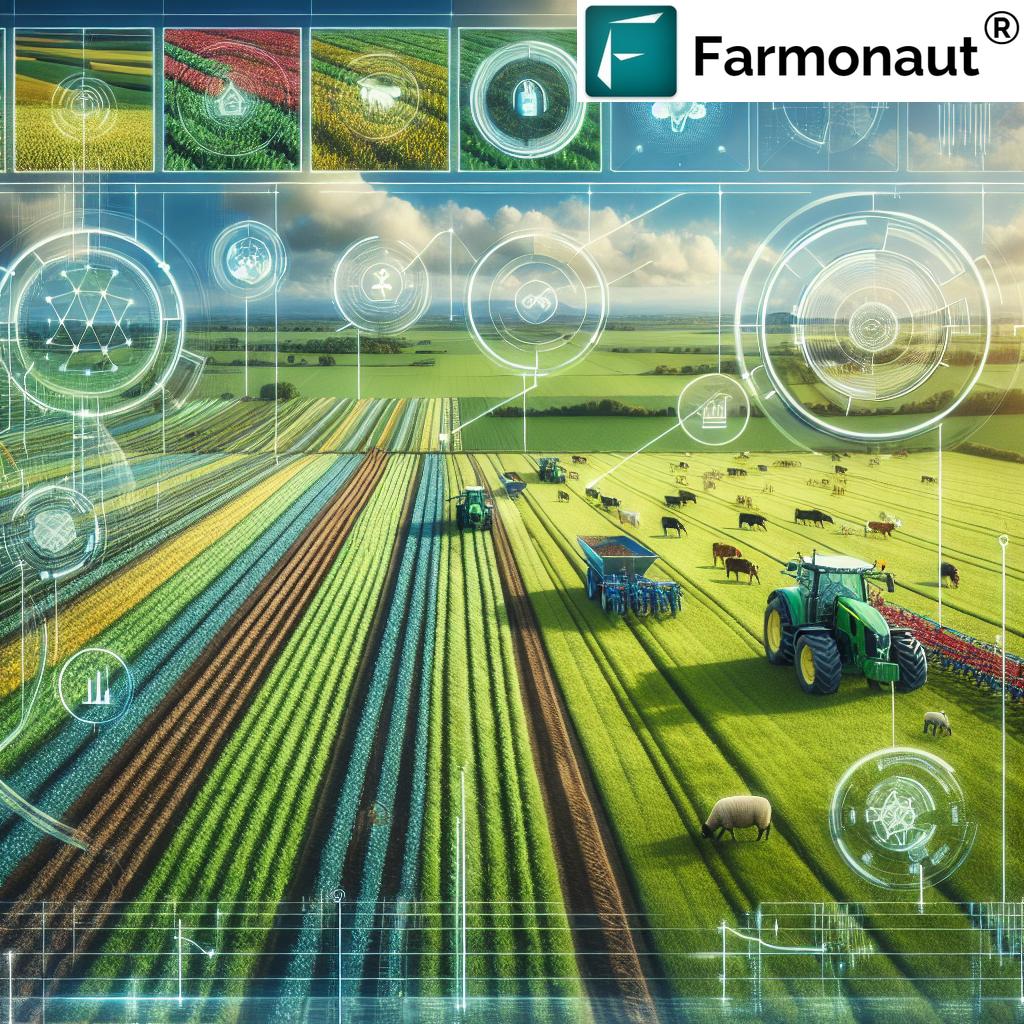
5. Labor Management
Labor is often the largest recurring expense for any farm. Modern farm management software with built-in labor management tools simplifies scheduling, productivity tracking, and compliance:
- Scheduling and tracking work hours with platforms like FieldTime
- Assigning tasks by location, crew, or individual
- Ensuring compliance with regional labor laws
- Optimizing workforce utilization for cost efficiency
Through labor analytics and digital timesheets, managers can swiftly identify productivity bottlenecks and allocate manpower where it matters most.
6. Compliance and Record-Keeping
Increasingly strict environmental and food safety regulations necessitate meticulous compliance and record-keeping. With digital farm compliance reporting tools, we can:
- Maintain accurate digital records of all operations—including pesticide usage, soil treatments, water use, and residue management
- Generate instant compliance reports to meet regulatory audits
- Track environmental impact and sustainability metrics
These records are invaluable for accessing new markets, qualifying for certifications, and minimizing legal and environmental risks. Farmonaut even offers sophisticated carbon footprinting tools to monitor and reduce your farm’s environmental impact.
7. Weather Integration and Risk Alerts
Weather events remain a major source of uncertainty in agriculture. Advanced weather integration and risk alert tools in farm management software provide us with:
- Real-time weather updates directly on mobile or desktop dashboard
- Automated risk alerts for frost, drought, pest outbreaks, and more
- Historical weather data to assess trends and plan for resiliency
- Integration with satellite imagery to monitor microclimates across fields
This connectivity helps us anticipate challenges, plan proactively, and dramatically reduce weather-related crop losses.
Feature Comparison Table: 7 Secret Tools in Farm Management Software
| Tool Name | Primary Function | Estimated Efficiency Boost (%) | Data Integration Level | User-Friendliness | Sustainability Impact |
|---|---|---|---|---|---|
| Crop Planning & Management | Optimize rotations, monitor growth, predict yields, track treatments | 22-27% | High | ★★★★★ | High |
| Livestock Management | Track animal health, breeding, performance | 18-23% | Medium | ★★★★☆ | Moderate |
| Financial Management | Expense tracking, profitability, budgeting, analytics | 20-28% | High | ★★★★★ | Moderate |
| Inventory & Equipment Mgmt | Inventory tracking, scheduled maintenance, asset history | 17-21% | Medium | ★★★★☆ | Moderate |
| Labor Management | Workforce scheduling, productivity, time-tracking | 14-19% | Low-Medium | ★★★☆☆ | Low |
| Compliance & Record-Keeping | Regulatory records, digital audit trails, reporting | 13-15% | Medium | ★★★★☆ | High |
| Weather & Risk Alerts | Weather monitoring, automated risk alerts, actionable advisories | 18-25% | High | ★★★★★ | High |
Farmonaut Spotlight: Redefining Farm Management Software
Among the leading innovators in agricultural software, Farmonaut stands out for making precision agriculture affordable, scalable, and accessible to all. By blending satellite imagery, AI, machine learning, and blockchain, Farmonaut empowers us to embrace advanced farm data management and operational optimization.
- Satellite-Based Crop Health Monitoring: Get real-time crop health insights (NDVI, soil moisture, vegetation indices) to make immediate resource allocation decisions and boost yields, all without the need for expensive hardware.
- Jeevn AI Advisory System: Personalized, AI-powered advice delivered instantly; integrates weather, growth stage, and historical data for customized crop management.
- Blockchain Traceability: Achieve transparent, secure product journeys from field to consumer, building trust while meeting market compliance standards. Discover how blockchain-based traceability transforms agricultural supply chains.
- Fleet and Resource Management: Optimize logistics, track fleet usage, reduce costs, and improve safety with integrated asset management.
- Carbon Footprinting: Monitor and reduce your environmental impact, supporting sustainable agriculture practices and global climate goals. Explore Farmonaut’s carbon tracking tools here.
Accessible on Android, iOS, and web platforms — and via API — Farmonaut supports every segment of the agricultural ecosystem with user-friendly interfaces and maximum data integration.
Major Benefits of Implementing Farm Management Software
Transitioning to a digital-first approach with farm management software brings immediate and long-term benefits:
- Increased Efficiency and Productivity: Streamlined operations, automated monitoring, and centralized records mean time saved and improved workflow across the board.
- Cost Control: Data-driven planning enables us to optimize the use of water, fertilizers, equipment, and labor, slashing unnecessary expenses and increasing return on investment.
- Improved Decision-Making: Access to deep analytics allows for strategic crop management, market planning, and risk assessment, supporting resilient and profitable agriculture.
- Sustainability and Compliance: Monitor carbon footprints, manage environmental metrics, and streamline regulatory compliance to contribute positively to sustainable agriculture goals.
- Expanded Market Access: Traceability features and integrated supply chain management facilitate entry into premium and international markets.
Emerging Trends in Agricultural Data Management and Farm Management Software
The field of farm management software evolves rapidly, harnessing breakthroughs in digital technology and data science. Here are some trends driving the next phase of agricultural transformation:
Artificial Intelligence and Machine Learning
AI and machine learning make it possible to analyze immense datasets, resulting in predictive models for crop yields, pest outbreaks, and input optimization. Platforms like Cropin Cloud utilize AI-driven agricultural data management for real-time and forecast-based recommendations.
Satellite Imagery and Drones
The use of satellite and drone technologies in precision agriculture platforms provides detailed, multi-layered insights into cropland status. Farmonaut’s satellite-enabled monitoring removes the need for costly sensors on the ground while delivering up-to-date vegetation indices, soil moisture data, and field condition maps, supporting precise intervention and dramatic cost savings.
Mobile Applications and Internet of Things (IoT) Integration
Mobile accessibility and IoT devices are rapidly closing the gap between field activity and operational oversight. Farm management software that integrates with edge devices enables instant remote data entry, field condition alerts, and centralized operational control—anywhere, any time.
Wondering about large scale multi-site and plantation management? Explore Farmonaut’s powerful platform for agribusinesses, designed for seamless large scale farm management and plantation insights.
Challenges & Considerations When Choosing Farm Management Software
While the case for digital transformation in agriculture is compelling, there remain some practical considerations and challenges:
- Cost of Implementation: Initial setup and subscription fees may be significant (especially for smallholders), but cloud-based, scalable models like Farmonaut are rapidly closing the affordability gap.
- Data Security and Privacy: Protecting sensitive farm, financial, and operational data is paramount. Check the provider’s security protocols before onboarding.
- Integration with Existing Systems: Ensure compatibility with your existing machinery, ERP, and other digital records for seamless data tracking and operational flow.
- Training and Support: A successful software rollout depends on accessible training, including demo sessions, knowledge bases, and responsive support. Prioritize user-friendly designs and platforms with robust customer education tools.
- Reliable Internet Access: Cloud-based or API-enabled FMS platforms require stable internet access. Offline features or synchronization abilities can help mitigate rural connectivity issues.
Our advice: always start with a detailed assessment of your operational needs, available resources, and long-term growth plans. Look for providers offering flexible pricing, trial access, and comprehensive documentation.
Frequently Asked Questions: Agriculture Farm Management Software & Tools
What is farm management software and how does it help modern farms?
Farm management software is a suite of digital solutions that streamline, monitor, and optimize all operational aspects of a modern farm—from crop and livestock management to finances and compliance. It enhances efficiency, boosts productivity, minimizes resource waste, and helps us make rapid, data-driven decisions.
How can FMS increase agricultural productivity & sustainability?
By leveraging real-time data analytics, integrated weather updates, precise operational planning, and automated alerts, FMS platforms enable us to increase yields, reduce input costs, and minimize environmental impact—core pillars of both productivity and sustainability.
Is farm management software suitable for small-scale farmers?
Absolutely! Modern FMS solutions, especially cloud-based and app-driven systems like Farmonaut, are designed to be scalable, user-friendly, and affordable for smallholders as well as large agribusinesses.
How is data privacy and security managed?
Leading platforms employ advanced encryption, multi-factor authentication, and compliance with global data standards. Always check your provider’s privacy policy and confirm their security practices before deploying on your farm.
How do I get started with Farmonaut?
Simply choose your access path:
- Web Browser App: Launch Farmonaut Web App
- Android Devices: Download from Google Play
- iOS Devices: Download from App Store
- API Developers: Farmonaut API | API Documentation
Conclusion: The Future of Efficient and Sustainable Agriculture
The integration of digital tools into agriculture is no longer a luxury—it’s a necessity. Farm management software encapsulates the future of farming, providing us with the operational visibility, data accuracy, and actionable insights required to thrive amid evolving economic and environmental challenges.
With accessible and scalable platforms such as Farmonaut, even the smallest farms can harness the power of satellite monitoring, AI-driven crop management, real-time weather alerts, and blockchain-based traceability. These capabilities empower farmers and agribusinesses alike to not only enhance productivity and profitability, but also foster compliance, sustainability, and trust across the entire supply chain.
We encourage everyone—farmers, consultants, agribusiness managers, and policymakers—to explore the possibilities of farm management software and drive the agricultural sector toward a more efficient, sustainable, and transparent future.
Farmonaut Subscription Plans
Choose the plan that fits your farm’s needs. Farmonaut provides flexible, scalable, and affordable solutions for individuals, cooperatives, and agribusinesses. Benefit from satellite-based monitoring, AI advisory, API access, and more — all available via web & mobile.


